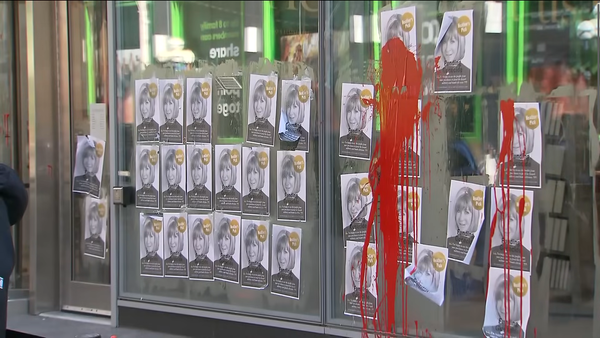Last month, a young woman in London, England named Sarah Everard went missing while walking home. Nine days later, she was found dead, allegedly killed by a police officer.
The incident incited international discussions about violence against women in the streets, with collective expressions about feeling unsafe walking home. In Vancouver, many women responding to the news shared their stories using using the hashtags #NotAllMenButAllWomen and #YesAllWomen, which are responses to the #NotAllMen argument. They claim that while not all men assault women, all women have experienced harassment or assault.
Much of the media coverage on the subject from self-identified feminists focused on what men should do to combat this sort of violence. An article in the Irish Times, for example, called on the public to begin addressing issues like toxic masculinity, and to teach men not to abuse women. A United Kingdom Green Party peer, meanwhile, half-seriously called for a 6 p.m. curfew for men to keep women safe.
Yet while making streets more secure is important, people have misrepresented the core of the issue by presenting gendered violence as a predominantly street problem.
This isn’t new, as “the streets” and “stranger danger” are common tropes when conceptualizing violence against women. In the popular imagination — due in large part to the media focusing reporting on crimes committed by strangers — violence against women typically takes the form of a strange and crazed man that drugs or corners a woman or catches her off-guard.
This isn’t the case, as feminists should know, and portraying it as such will hamper efforts to pursue the meaningful action needed to save womens’ lives.
Not All Women
Since the #MeToo movement began, there has been a tendency to lump a variety of different issues together and package them as a general ‘women’s issue.’ The broad definitions in place for such issues allow hashtags like #YesAllWomen to exist.
Yet there are marked differences between sexual harassment, sexual and gendered abuse, and gendered murder. It doesn’t make sense to group all of these things under #MeToo or #YesAllWomen, and doing so does women a disservice.
In Canada, 80 per cent of reported sexual assaults committed in 2002 against women were done so by someone they personally know. Recent Canadian statistics have also found that nearly half of murdered women were killed by their spouse or intimate partner, with other significant contributors being family members and casual acquaintances. About 6 per cent of murdered women were killed by a stranger — nearly 16 per cent of murdered men were killed by strangers.
In contrast, sexual harassment — defined by Statistics Canada for research purposes as the experience of unwanted sexual behaviour in public — usually pertains to a stranger on the street and not someone a woman knows (otherwise, for example, it would be classified as something like workplace harassment.)
Feminist analyses that group these differing actions together by generalizing men’s motivation for them (toxic masculinity, aggression, etc.) are messy attempts to create common ground and universalize women’s experiences. Yet women are not all equally susceptible to gendered violence, or the same kinds of gendered violence.
For example, disabled women, Indigenous women and low-income women are more likely than most other groups of women to be the victims of sexual violence. Indigenous women in Canada are also about six times more likely to be victims of homicide than non-Indigenous women.
Does it make sense to speak of risks Indigenous and non-Indigenous women in Canada face in the same light? There are non-gendered factors that make women susceptible to experiencing violence at vastly different levels.
It’s strange for Everard’s death to be sparking so much discourse on how we ought to protect women when it isn’t representative of the way women in Canada or the U.K. tend to experience violence.
What Should Be Done
Public campaigns asking the average man to do better won’t be the solution to gendered violence. Men do not all have the equal capacity to do something about gendered violence, because like with women, power is not distributed equally among men. Men who work in positions that give them influence on law and policy, for instance, are more able to do something about women’s vulnerability than the average man in Canada.
It does us no service to treat the average man as a barrier to women’s safety rather than to place pressure on men and women in power. In other words, women in parliament hold more responsibility and capability to provide solutions to gendered violence than men with no political influence.
Moreover, constraining what men can do in the streets won’t help much when an overwhelming amount of women who are victims of sexual violence are targeted by people they know personally. What happened to Everard is far less likely than what happened to the numerous women killed by their intimate partners in the past year. If we are to better reflect women’s experience with gendered violence in public discourse, we must treat the home as a more dangerous space for women than the streets.
We must also acknowledge that there may be different solutions for different women. Canada’s National Inquiry Into Missing And Murdered Indigenous Women And Girls, for instance, proposed numerous legislative and policy solutions that specifically pertain to Indigenous women’s disproportionate risk for experiencing gendered violence. These solutions account for Indigenous-specific issues, like over- and under- policing, and access to legal aid and education.
We must also address the class and financial components of gendered violence. Statistics Canada found that in 2017/2018, about half of women in residential shelters for victims of abuse experienced financial abuse from their partner. Financial reasons have also been cited as one of the main reasons battered women are both unable to leave abusive relationships and incentivized to reconcile with their abusive partner. It’s critical that these financial disparities and the system that gives rise to them are tackled.
The Barriers To Real Action
There are multiple reasons why the media and the predominant voices in the discourse have glossed over these stats and solutions, and instead focused on what goes on in the streets.
For one, street violence as the paradigmatic expression of gendered violence is easily commodified. The global self-defence industry has grown tremendously, and is expected to expand further according to market forecasting. Pepper spray in particular has seen a huge increase in sales, which market researchers attribute to women’s “growing acceptance” of it as a self-defence product.
But, pepper spray might even become passé at some point. Stylish looking self-defence gadgets are promoted by women on TikTok, and advertised on Amazon as such. Self-defence keychain items are becoming trendy enough to be advertised in articles like they’re new pieces of clothing. They are also featured and advertised on popular platforms like Tech Insider.
There are market actors that benefit from women feeling like they are unsafe at all times, and tactical ways in which they combine fashionability with a news cycle that calls for women to be hypervigilant on the streets.
I don’t mean to suggest that there’s an active conspiracy where street violence is deliberately overblown in order to sell keychains to women. Rather, I simply state: How convenient. Feminists and progressives are able to be conscripted into helping grow a booming personal weapons industry geared to the least common form of violence against women, while obscuring the way sexual violence most commonly takes place.
Real solutions to the majority of instances of gendered violence are less commodifiable. Further, they are anathema to those in power that favour austerity measures over providing women with economic assurances.
If we were serious about combating gendered violence, we would focus on the material conditions that force women into staying with dangerous partners or that make them vulnerable and unable to escape abusive family members. These problems implicate some men and some women; namely, the ones with enough power to impact people’s levels of economic security.
Credit where credit is due: since the pandemic began, the Canadian government has invested more than $207 million toward helping women experiencing homelessness and fleeing gender-based violence. But this should just be a start, and is nowhere near adequate. We are one of the richest countries in the world, yet class disparity still underlies a significant deal of abuse.
Ultimately, gendered violence isn’t a reflection of bad attitudes, but the material power that some men are able to wield over particularly vulnerable classes of women. We won’t be fixing that with personal alarm keychains or moralizing at the average man, and shouldn’t let those in power off the hook by continuing to act like doing so is possible.






